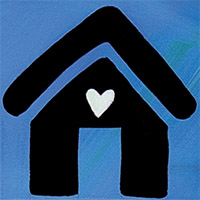 2 March, 2017
2 March, 2017
One of the greatest issues facing us when we remove children from their birth families is finding safe, stable and nurturing homes in which they can live.
.
In the final part of this three-part article we look at the problems in residential care identified in Commissioner Nyland’s October 2016 report and the Government’s response in December.
The first two parts, on home-based care and residential care have appeared previously on the Guardian’s website.
In her report Commissioner Nyland described a situation in emergency care in which children were housed in temporary accommodation (such as motels, caravan parks and short-term rentals) by rotating shifts of workers with minimal training and supervision who were supplied by commercial organisations. Numbers have grown since Commissioner Nyland drafted her report and for around 200 children, some as young as a few months or a few years old, these are their defacto care arrangements.
She observed that these arrangements are very unsuitable for children for any but the shortest time, in a genuine emergency. They do not support their psychological needs and place them at enhanced risk of abuse.
This is how the Government has pledged to respond.
- The use of commercial carers will be phased out (R 128) and commercial providers will be placed under more strict regulation of their employment practices and reporting requirements (R129).
- The Residential Care Directorate will take over responsibility for managing emergency care placements (R131) and government workers will be more fully informed to allow them to provide oversight of the workers placed from commercial agencies (130).
- The Government has undertaken that single-handed shifts by commercial carers will cease (R132) but not immediately as Commissioner Nyland recommended due to the capacity to provide the additional staff needed or suitable alternative placements.
- A community visitors’ scheme for emergency and residential care residents is promised (R 137) although work on the scheme awaits the passage of the Child and Young People (Safety) Bill 2016 which is in State Parliament at the time of writing.
- Children in emergency care will be supported with an education program to understand their rights (R136) and have a direct line of complaint to the Chief Executive of the Department for child Protection (R134).
- An annual report on those complaints will be provided to the Guardian for Children and Young People (pending the setup of the complaints system) rather than the quarterly reports recommended by Commissioner Nyland (R135).
- There will be more stringent recruiting of care workers including psychological testing (R138) and strict probation and review requirements will be introduced (R139).
- Improved processes and pathways for residential care staff to observe and report concerns about the behaviour of staff with respect to children will be introduced (R142). A tracking system will bring together and respond to information collected about suspicious staff behaviour from various sources (R143).
- The Government has accepted in principle the recommendation to abandon and plan to outsource residential care or emergency care (R151). It has committed to decreasing the numbers of children in emergency care but this will necessitate, it states, the expansion of residential care by outsourcing .
- The Government has accepted in principle the recommendation to articulate the standards against which deficiencies in care can be assessed (R179).
- The Government has agreed to provide a report to the Minister and the Guardian for Children and Young People on performance against service criteria (R198) but the scope of this may be limited by the capabilities of the C3MS case management software allows.
The full paper A place to call home for children in state care is available for download.

